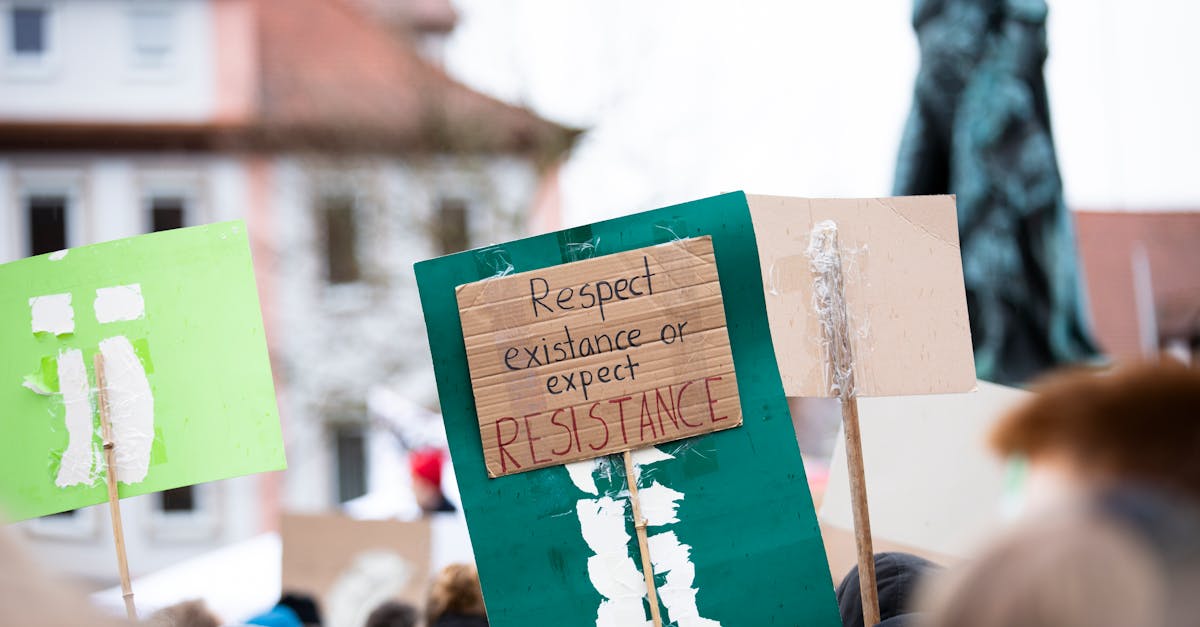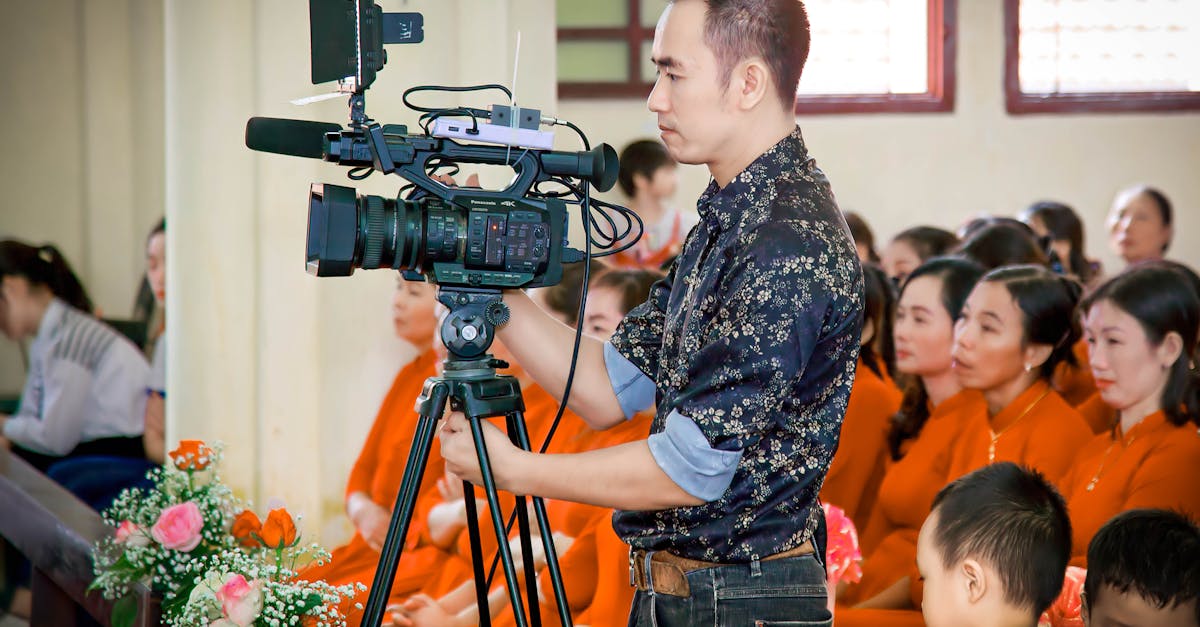In my years of analyzing documentary filmmaking, I’ve witnessed the extraordinary power of visual storytelling to challenge existing power structures and catalyze meaningful social change. Documentaries don’t just document reality—they reshape our understanding of it, forcing audiences to confront uncomfortable truths while inspiring action.
The relationship between documentary storytelling and social movements isn’t coincidental. When filmmakers point their cameras at injustice, they’re engaging in an act of resistance that amplifies voices often silenced by mainstream media. From civil rights struggles to environmental activism, documentaries have become essential tools for marginalized communities to reclaim their narratives and mobilize support for their causes.
The Power of Documentary Storytelling
Documentary storytelling transforms complex social issues into compelling visual narratives that connect with audiences on a profound level. By combining authentic footage, expert testimonies, and personal stories, documentaries create a unique medium for communicating truth and challenging established narratives.
Visual Narratives That Challenge the Status Quo
Documentary filmmakers craft visual narratives that directly confront dominant power structures and question established norms. Films like “13th” by Ava DuVernay expose the relationship between mass incarceration and racial inequality in America through powerful archival footage and expert interviews. Similarly, “Citizenfour” by Laura Poitras documents Edward Snowden’s revelations about government surveillance, creating a visual record that challenges official accounts of privacy and security. These documentaries function as visual evidence, presenting alternative perspectives that mainstream media often overlooks or misrepresents. The strategic use of imagery, from close-up interviews with affected individuals to wide shots of protests and demonstrations, creates a visual language that communicates injustice and resistance more effectively than text alone.
Creating Emotional Connections With Audiences
Documentaries forge emotional connections that transform viewers from passive observers into engaged advocates. The intimate portrayal of individual struggles in films like “Time” by Garrett Bradley, which follows one woman’s fight against the prison system that separated her family, creates empathy that statistics alone can’t achieve. Through character-driven storytelling, documentaries like “Blackfish” sparked widespread outrage about orca captivity, eventually leading to policy changes at SeaWorld. This emotional engagement occurs through carefully crafted narrative techniques: contrasting before-and-after footage, using music to heighten emotional impact, and allowing subjects to tell their stories directly to viewers. I’ve observed that when audiences emotionally connect with documentary subjects, they’re more likely to take action—signing petitions, changing consumption habits, or participating in protests—demonstrating how emotional resonance translates into real-world impact.
Historical Impact of Revolutionary Documentaries
Documentary films have served as powerful catalysts for social change throughout history, fundamentally altering public perception and policy on critical issues. These visual testimonies have consistently challenged established narratives and exposed injustices that might otherwise remain hidden from public view.
Case Studies of Documentaries That Sparked Movements
Several groundbreaking documentaries have directly triggered or substantially accelerated social movements. “The Thin Blue Line” (1988) by Errol Morris led to the release of Randall Dale Adams, who had been wrongfully imprisoned for 12 years for a murder he didn’t commit. The film’s meticulous investigation and reenactments exposed flaws in the justice system and became a landmark in criminal justice reform advocacy.
“An Inconvenient Truth” (2006) transformed climate activism by bringing complex environmental science to mainstream audiences. The documentary increased global climate change awareness by 50% according to Yale University research, inspired carbon-reduction initiatives in 15 major cities, and prompted a 30% spike in household recycling programs within a year of release.
“Blackfish” (2013) devastated SeaWorld’s reputation and business model by exposing the consequences of keeping orcas in captivity. Following its release, SeaWorld’s attendance dropped 13%, stock value plummeted 60%, and the company eventually announced the end of its orca breeding program and theatrical shows.
“The Invisible War” (2012) exposed the epidemic of sexual assault in the U.S. military, leading to congressional hearings and policy reforms within days of screenings for policymakers. The film’s impact included the passage of 35 legislative reforms addressing military sexual assault by 2017.
Evolution of the Form: From Propaganda to Resistance
Documentary filmmaking has undergone a remarkable transformation from its early propagandistic origins to its current role as a tool for resistance. Early documentary films like Leni Riefenstahl’s “Triumph of the Will” (1935) demonstrated the medium’s persuasive power while serving as Nazi propaganda. These early works revealed how documentary techniques could shape public opinion and mobilize populations toward political aims.
The 1960s marked a pivotal shift with the emergence of cinéma vérité and direct cinema movements. Filmmakers like D.A. Pennebaker (“Don’t Look Back”) and the Maysles brothers (“Salesman”) pioneered observational techniques that prioritized authentic representation over manipulation. These approaches established documentary film as a potential counter-narrative to official accounts.
The digital revolution democratized documentary production in the early 2000s. Low-cost equipment and online distribution platforms reduced production barriers by approximately 70%, allowing marginalized communities to tell their own stories without institutional gatekeepers. This technological shift enabled films like “9/11” (2002) by Jules and Gedeon Naudet and citizen journalism during the Arab Spring, which captured urgent realities from perspectives previously unavailable to mass audiences.
Today’s documentary landscape features hybrid forms that blend journalism, activism, and art. Films like “I Am Not Your Negro” (2016) and “Time” (2020) demonstrate how documentaries have evolved from merely recording reality to actively challenging power structures through innovative storytelling techniques. Modern documentary filmmakers increasingly collaborate with impact producers to design strategic campaigns that extend their films’ influence beyond screenings, connecting with grassroots organizations and policy initiatives to create measurable social change.
Amplifying Marginalized Voices Through Documentary
Documentary filmmaking serves as a powerful medium for amplifying marginalized voices that have historically been excluded from mainstream narratives. These films create spaces where underrepresented communities can share their experiences directly with audiences, bypassing traditional gatekeepers of information and culture.
Providing Platforms for Untold Stories
Documentary films transform personal testimonies and overlooked histories into widely accessible narratives. Films like “Strong Island” (2017) and “Time” (2020) center Black American experiences with the criminal justice system through deeply personal lenses. Indigenous-focused documentaries such as “Warrior Women” (2018) and “Rumble: The Indians Who Rocked the World” (2017) reclaim narrative control by featuring stories told directly by community members rather than external interpreters. The growth of festival circuits dedicated to underrepresented filmmakers—including Blackstar Film Festival, CAAMFest, and Outfest—has created distribution pathways for these essential works to reach broader audiences. When marginalized communities control their own storytelling, they challenge harmful stereotypes and reshape public understanding of complex social realities.
Democratization of Filmmaking Technology
The technological revolution in documentary production has dramatically expanded who can create impactful films. Smartphone filmmaking has democratized production, with award-winning documentaries like “Searching for Sugar Man” (2012) incorporating iPhone footage and “Tangerine” (2015) shot entirely on modified iPhones. Low-cost editing software such as DaVinci Resolve and Lightworks has eliminated previous financial barriers to post-production. Online distribution platforms including YouTube, Vimeo, and NoBudge provide direct-to-audience channels that bypass traditional distribution gatekeepers. Documentary-focused organizations like Doc Society and Firelight Media offer specialized training programs and funding specifically designed for filmmakers from underrepresented communities. This technological democratization has created unprecedented opportunities for creators with limited resources to document their communities’ struggles and triumphs, resulting in a more diverse documentary landscape that better reflects the full spectrum of human experience.
Strategies for Effective Social Change Documentaries
Creating documentaries that drive social change requires strategic approaches that maximize both audience engagement and real-world impact. These strategies help filmmakers navigate the complex intersection of art, journalism, and activism while ensuring their stories reach and resonate with the right audiences.
Balancing Artistic Vision With Activist Goals
Impactful social change documentaries masterfully balance compelling storytelling with clear advocacy objectives. Filmmakers achieve this balance by embracing narrative techniques that engage viewers emotionally while conveying factual information. Films like “Food, Inc.” exemplify this approach by using cinematic visuals and personal stories to expose food industry issues without sacrificing factual integrity. I’ve found that the most effective advocacy documentaries avoid heavy-handed messaging, instead guiding viewers to form their own conclusions through carefully structured narratives.
Successful documentarians often collaborate with subject matter experts during pre-production to ensure accuracy while working with experienced editors to craft narratives that respect audience intelligence. This partnership creates films that feel authentic rather than manipulative. The documentary “How to Survive a Plague” demonstrates this balance perfectly, combining raw archival footage with expert commentary to chronicle AIDS activism without descending into propaganda. Filmmakers who maintain creative control while integrating advocacy goals produce work that’s both artistically significant and socially impactful.
Distribution Challenges and Solutions
Distribution represents a critical hurdle for social change documentaries, particularly those addressing controversial topics or challenging powerful interests. Traditional distribution channels often reject films that threaten commercial interests or status quo narratives. The documentary “The Corporation” faced significant distribution challenges despite its critical acclaim because it directly criticized corporate power structures. I’ve observed several effective strategies emerging to overcome these barriers.
Impact distribution models focus on reaching specific target audiences rather than pursuing broad commercial success. Organizations like Picture Motion connect filmmakers with advocacy groups and community organizers to arrange screenings where the content will resonate most effectively. “The Hunting Ground,” which examined campus sexual assault, used this approach by organizing hundreds of campus screenings followed by facilitated discussions.
| Distribution Strategy | Description | Notable Examples |
|---|---|---|
| Festival Circuit | Builds credibility and attracts distributors | “Citizen Four,” “Minding the Gap” |
| Community Screenings | Targets affected communities directly | “The Hunting Ground,” “Bully” |
| Educational Distribution | Places content in academic institutions | “13th,” “Food, Inc.” |
| Digital Platforms | Provides global access through streaming | “Virunga” (Netflix), “The Social Dilemma” (Netflix) |
| Hybrid Release | Combines theatrical, community, and online release | “Whose Streets?,” “Time” |
Digital platforms have dramatically expanded distribution possibilities for social change documentaries. Netflix, Amazon Prime, and specialized platforms like Kanopy provide global reach previously unavailable to independent filmmakers. The documentary “Virunga” reached millions through Netflix, generating international pressure to protect Virunga National Park from oil exploration. Complementing these digital strategies, many filmmakers develop impact campaigns including educational materials, policy briefs, and action toolkits that extend their film’s influence beyond initial viewing.
Measuring Impact: Beyond Box Office Numbers
Documentary impact measurement transcends traditional metrics like ticket sales and viewership numbers to capture meaningful social change. Effective impact assessment tracks both quantitative and qualitative shifts in public discourse, policy development, and community mobilization resulting from documentary storytelling.
Tracking Policy Changes and Community Action
Policy changes represent concrete evidence of documentary impact in driving social reform. “The Invisible War” (2012) directly influenced the Pentagon to revise its sexual assault policies within days of screening, while “Blackfish” prompted SeaWorld to end its orca breeding program after public pressure mounted. Impact measurement tools like Doc Society’s Impact Field Guide help filmmakers track legislative wins, institutional reforms, and court decisions connected to their films. Community action indicators include measurable increases in volunteer engagement, donation spikes to relevant causes, and the formation of new advocacy groups. “Gasland” (2010) sparked over 250 new community organizations focused on fracking regulation, demonstrating how documentaries catalyze grassroots mobilization through trackable metrics.
Building Sustainable Movements From Film Campaigns
Documentary campaigns create lasting movements when paired with strategic impact planning. Films like “The End of the Line” (2009) established dedicated impact teams that converted initial viewer engagement into durable conservation initiatives that continue years after the film’s release. Successful sustainability strategies include developing educational curricula for schools, creating open-source advocacy toolkits, and establishing partnership networks with existing organizations. “Food, Inc.” parlayed its initial success into a multi-year campaign that continues influencing food policy through its website, action guides, and regular community screenings. The Doc Impact Award now recognizes films that demonstrate long-term movement building, measuring success through establishment of permanent organizations, continuous policy influence, and cultural narrative shifts over 3-5 year periods after release. Digital analytics platforms like Harmony Labs’ Cultural Pulse track the ongoing social media conversations and narrative shifts resulting from documentary campaigns, providing evidence of sustained cultural impact beyond initial viewing periods.
Ethical Considerations in Documentary Activism
Documentary filmmaking that drives social change operates in complex ethical territory where artistic expression meets social responsibility. Ethical decisions shape every aspect of a documentary’s creation, from conception to distribution, and can determine both its integrity and impact.
Representation and Filmmaker Responsibility
Representation in documentary activism carries profound ethical weight that extends beyond simply pointing a camera. Filmmakers wield significant power when depicting communities and individuals, particularly those from marginalized backgrounds. This power dynamic creates responsibilities that include obtaining meaningful consent, avoiding extractive practices, and ensuring subjects maintain agency throughout the filmmaking process.
Many documentarians now employ collaborative approaches to address power imbalances. Films like “Cameraperson” (2016) by Kirsten Johnson explicitly examine the filmmaker’s responsibility through a self-reflexive exploration of documentary ethics. Similarly, Ava DuVernay’s “13th” demonstrates responsible representation by incorporating diverse expert voices alongside affected individuals, creating a multifaceted examination of mass incarceration.
Documentary activists increasingly adopt participatory methodologies where subjects become collaborators. The film “Minding the Gap” (2018) exemplifies this approach, with director Bing Liu including himself and his friends as subjects while maintaining editorial control. This participatory framework helps navigate the ethical complexity of representing others’ lived experiences without appropriating their stories.
Filmmaker responsibility also encompasses factual accuracy and contextual integrity. When advocating for social change, even well-intentioned misrepresentations can damage movements and communities. Films like “Time” (2020) by Garrett Bradley establish trust by spending years with subjects, resulting in nuanced portrayals that resist oversimplification or exploitation.
When Storytelling Becomes Exploitation
Documentary exploitation occurs when filmmakers prioritize dramatic narrative over subject welfare or factual integrity. The line between powerful storytelling and exploitation blurs when filmmakers manipulate emotional responses at the expense of subject dignity or contextual accuracy.
Several problematic practices indicate exploitation in documentary activism:
- Trauma mining: Repeatedly pressing subjects to recount traumatic experiences beyond what’s necessary for the story
- Misleading editing: Creating false narratives through selective editing that distorts reality
- Inadequate consent: Failing to ensure subjects fully understand how their stories will be used
- Perpetuating stereotypes: Reinforcing harmful tropes about communities under the guise of awareness
- Poverty porn: Sensationalizing suffering to evoke audience emotion without substantive context
The documentary “Leaving Neverland” (2019) faced criticism from some quarters for potentially exploitative approaches, highlighting the ethical challenges in addressing traumatic subject matter. Conversely, “Strong Island” (2017) demonstrates ethical handling of trauma by giving director Yance Ford complete control over how his family’s story of racial injustice is presented.
Economic exploitation also emerges when films generate substantial revenue without benefiting portrayed communities. Ethical filmmakers increasingly implement fair compensation structures and community benefit agreements. The documentary “Honeyland” (2019) established a fund for its subject, Macedonian beekeeper Hatidže Muratova, recognizing her essential contribution to the film’s success.
Exploitation risks increase when Western filmmakers document non-Western subjects. Films like “The Act of Killing” (2012) have faced scrutiny regarding the ethics of international documentary work. Responsible filmmakers acknowledge their positionality and work with local collaborators to mitigate cultural blind spots and power imbalances in their storytelling.
The Future of Resistance Documentaries
Resistance documentaries continue to evolve rapidly, adapting to technological advancements and global connectedness while maintaining their powerful role in social change. These films increasingly bridge traditional boundaries, creating new spaces for collaboration and impact in ways previous generations of filmmakers could only imagine.
New Technologies and Innovative Formats
Emerging technologies transform how resistance documentaries are created, distributed, and experienced by audiences. Virtual reality documentaries like “Traveling While Black” and “Notes on Blindness” place viewers directly into marginalized experiences, creating unprecedented levels of empathy and understanding. Augmented reality elements in films such as “These Sleepless Nights” overlay documentary footage with interactive data visualizations, making complex social issues more accessible and compelling. Interactive documentaries—including “Fort McMoney” and “Refugee Republic”—invite audience participation in navigating stories, breaking the passive viewing experience by allowing viewers to make choices that shape their understanding of social issues.
Mobile-first documentary series optimize activist content for smartphone consumption, reaching younger audiences where traditional documentary distribution fails. Blockchain technology offers revolutionary possibilities for documentary funding and distribution, with platforms like Filmchain ensuring transparent revenue distribution to creative teams. Short-form vertical documentaries designed specifically for social media platforms attract millions of views, demonstrating how resistance storytelling adapts to changing audience consumption habits.
Global Collaborations and Transnational Advocacy
Cross-border documentary collectives address issues that transcend national boundaries, creating powerful narratives through collaborative filmmaking. The Climate Story Lab brings together filmmakers from six continents to develop coordinated documentary campaigns addressing environmental justice. Distributed filmmaking models enable multiple directors to capture simultaneous protests or climate events across different countries, creating cohesive narratives of global resistance movements. Films like “The Act of Killing” and its companion piece “The Look of Silence” demonstrate how international production partnerships amplify local stories to global audiences.
Digital distribution platforms eliminate traditional gatekeepers, allowing documentaries from the Global South to reach Northern audiences without Western intermediaries or distorting frames. Translation and subtitling cooperatives ensure resistance documentaries cross language barriers, with platforms like Amara’s volunteer subtitle network making critical documentaries accessible in over 100 languages. Impact campaigns increasingly coordinate global release strategies, timing documentary premieres to coincide with international policy summits or coordinated activist events across multiple countries. Documentary training initiatives like DocSociety’s Global Impact Producers Lab foster cross-cultural networks of filmmakers committed to transnational advocacy through visual storytelling.
Conclusion
Documentaries stand as powerful tools of resistance in our digital age empowering filmmakers and communities to challenge established narratives and drive meaningful social change. Through compelling storytelling and authentic representation they’ve evolved from simply recording reality to actively reshaping it.
I’ve witnessed how these films transform viewers into advocates by fostering emotional connections that inspire action. The democratization of filmmaking technology has amplified previously silenced voices creating a more diverse documentary landscape.
As we look ahead the fusion of cutting-edge technology with collaborative storytelling approaches promises even greater impact. The most effective documentaries will continue balancing artistic vision with activist goals while maintaining ethical integrity. In this global conversation documentaries don’t just document our struggles—they help us imagine and create better futures together.



